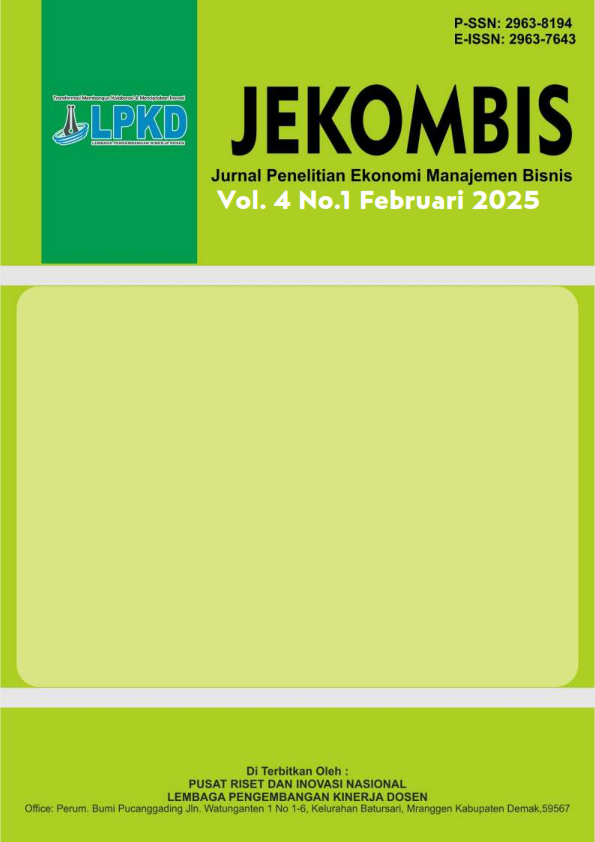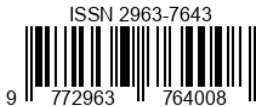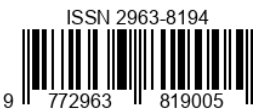Perancangan Form Penilaian dan Penerimaan Karyawan untuk Meningkatkan Kualitas Sumber Daya Manusia di One Boulevard Food Court
DOI:
https://doi.org/10.55606/jekombis.v4i1.4707Keywords:
HR, Company, DevelopmentAbstract
In the era of increasingly fierce business competition, the quality of human resources (HR) is one of the key factors that determine the success of a company. One Boulevard Food Court realizes the importance of HR as a valuable asset that plays a role in ideation, driving performance, and implementing activities to achieve company goals. However, currently, the employee assessment and recruitment process implemented is not optimal in supporting overall HR development. The unstructured system creates problems in determining the quality of prospective employees and evaluating the performance of existing employees. The unclear criteria and subjective assessment process resulted in many employees who did not meet the company's expectations. It is necessary to design a more structured employee assessment and recruitment form to overcome this problem. This formula is designed based on the company's needs analysis and includes criteria to assess employee competencies, skills, and potential. Through this system, One Boulevard Food Court is expected to increase transparency and efficiency in the administration process, as well as ensure that recruited employees meet the required quality.
Downloads
References
Aguinis, H., & Kraiger, K. (2009). Benefits of training and development for individuals and teams, organizations, and society. Annual Review of Psychology, 60, 451–474. https://doi.org/10.1146/annurev.psych.60.110707.163505
Armstrong, M. (2006). A handbook of human resource management practice. Kogan Page.
Becker, B. E., & Gerhart, B. (1996). The impact of human resource management on organizational performance: Progress and prospects. Academy of Management Journal, 39(4), 779–801. https://doi.org/10.2307/256712
Becker, B. E., & Huselid, M. A. (1998). High-performance work systems and firm performance: A synthesis of research and managerial implications. Research in Personnel and Human Resources Management, 16, 53–101.
Bratton, J., & Gold, J. (2017). Human resource management: Theory and practice. Macmillan International Higher Education.
Cascio, W. F. (2016). Managing human resources. McGraw-Hill.
Darudiato, S. (2007). Analisis dan perancangan sistem informasi sumber daya manusia. Seminar Nasional Teknologi Informasi (SNATI), 2007.
Dessler, G. (2013). Human resource management. Pearson.
Kahn, W. A. (1990). Psychological conditions of personal engagement and disengagement at work. Academy of Management Journal, 33(4), 692–724. https://doi.org/10.2307/256287
Kearney, E., & Gebert, D. (2009). Managing the innovation process: The role of HR in knowledge management. European Journal of Innovation Management, 12(3), 336–356. https://doi.org/10.1108/14601060910976085
Kirkpatrick, D. L. (1994). Evaluating training programs: The four levels. Berrett-Koehler Publishers.
Latham, G. P., & Locke, E. A. (2006). Enhancing the benefits and overcoming the pitfalls of goal setting. Organizational Dynamics, 35(4), 332–340. https://doi.org/10.1016/j.orgdyn.2006.08.004
Lawler, E. E. (2003). Rewarding excellence: Pay strategies for the new economy. Berrett-Koehler Publishers.
Mathis, R. L., & Jackson, J. H. (2011). Human resource management. Cengage Learning.
Noe, R. A. (2010). Employee training and development. McGraw-Hill.
Ramlall, S. (2004). A review of employee motivation theories and their implications for employee retention within organizations. Journal of American Academy of Business, 5(1/2), 52–63.
Rowe, W. G. (2001). Creating wealth in organizations: The role of human resource management. Academy of Management Executive, 15(1), 66–77. https://doi.org/10.5465/ame.2001.4251359
Saks, A. M. (2006). Antecedents and consequences of employee engagement. Journal of Managerial Psychology, 21(7), 600–619. https://doi.org/10.1108/02683940610713280
Tubre, T. C., & Collins, J. M. (2000). Human resource management. Journal of Management, 26(2), 247–259. https://doi.org/10.1177/014920630002600206
Ulrich, D., & Dulebohn, J. H. (2015). Are we there yet? What's next for HR? Professional Development: The International Journal of Continuing Social Work Education, 18(1), 1–7.
Wright, P. M., & Boswell, W. R. (2002). Desegregating human resource management: A conceptual framework and empirical test. Journal of Management, 28(3), 389–404. https://doi.org/10.1177/014920630202800303
Downloads
Published
How to Cite
Issue
Section
License
Copyright (c) 2025 Jurnal Penelitian Ekonomi Manajemen dan Bisnis

This work is licensed under a Creative Commons Attribution-ShareAlike 4.0 International License.







